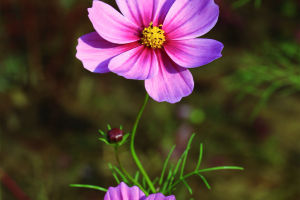The pink rose is a type of rose native to the temperate tropics and is found in northern China as well as Japan and Korea, where it has been cultivated for a long time.
Usually used for tea or medicinal purposes, it represents pampering, touching, declaration of love, remembering in the heart, and first love. It is both an excellent flowering shrub and an important spice plant. It flowers in May-June.
Pink roses have high environmental requirements, so special care should be taken during planting. The best time to plant pink roses is in the spring or in the autumn after the leaves have fallen when the temperature is relatively stable.
It is best to plant pink roses on relatively high ground. This will prevent water from accumulating and will ensure that the pink rose receives the necessary moisture for growth, and will also allow the pink rose to receive enough light for its flowers to open.
When planting pink roses, it is important to keep the roots about 15 cm above the ground to increase the survival rate of the rose and to make it easier for the roots to take root in the new environment.
Pink roses need full sun and a warm environment to grow. After the pink rose plant is planted, it is important to ensure that the plant receives plenty of sunlight each day. Pink roses need at least four hours of light per day, and in areas with long light hours, shade is necessary to ensure proper growth.
If you want to ensure the vitality of pink roses, especially when the flowers are delicate, you need to ensure that the ambient temperature of the plant is between 12°C and 28°C. Under this ambient temperature, the growth rate of pink roses will be significantly accelerated.
Before planting pink roses, make sure that the soil contains a lot of organic matter. Roses do not require a lot of water or fertilizer, and three or more applications of fertilizer are required throughout the rose planting cycle. When planting pink roses in the fall after the leaves have fallen, some fertilization is required, as the demand for nutrients in the soil gradually increases after winter.
Do not water pink roses too often, as they have a relatively low demand for water at this time of year, even in summer when it is best to water them once every 20 days to avoid root rot. It is important to note that fertilizer and water requirements vary depending on the season of planting, so it is important to adjust the amount of water and fertilizer according to the size of the rose.
There are many methods of breeding pink roses, including cuttings, seeding, crimping, and grafting.
Cuttings are the most important method of breeding pink roses. The method is simple and has a high survival rate. The branches of pink roses are inserted into the sandy soil, and the environment is strictly controlled and stimulated with growth hormones to ensure that the branches grow effectively.
The sowing method involves placing the seeds of the rose in a plastic bag and placing some moist sand in the bag. The temperature inside the bag should be around 20 degrees for one month to ensure effective seed germination and planting.
Grafting can be done by budding, root grafting, or branch grafting, depending on the situation.
There are many varieties of pink roses, including pink lychee, Diana, Aisha, red sleeve, pink beauty, awakening, pink snow mountain, candy snow mountain, Maria, pink diamond, shadow star, etc.


